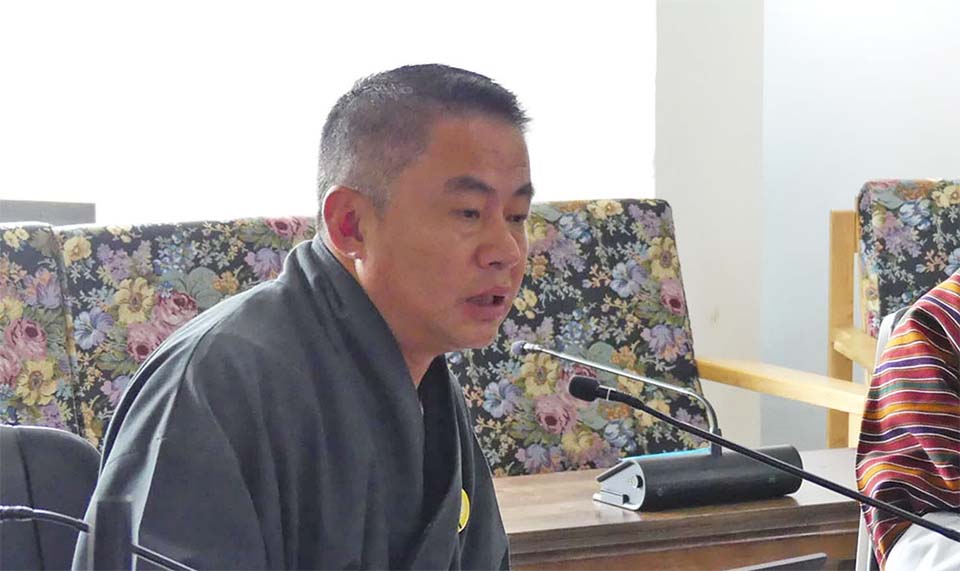July 29, 2024
THIMPHU – Bhutan requires a whopping USD 26 billion to achieve 20,000 MW (20 GW) of hydropower generation capacity by 2040. While that goal is a long way off, the government has some immediate plans to increase hydropower generation capacity by 3,119 MW, taking the total installed capacity to 5,000 MW in the 13th Plan.
For this, the government has allocated Nu 527 billion outside the 13th Plan. The question is – how will the government finance these hydropower projects?
Responding to a Kuensel query at the sixth Meet-the-Press yesterday, the director of Department of Energy, Karma Penjor Dorji, said that currently, the government is exploring a range of financing options, including strategic partnerships with industrial giants in India and global financial institutions to finance these ambitious hydropower projects.
The director said that the government is exploring investment in hydropower through a 70 percent debt and 30 percent equity financing model. “For financing larger projects, we are exploring bilateral and multilateral sources, EXIM financing, commercial loans, corporate and green bonds, pension funds, climate financing, infrastructure investment trusts, public offerings, and divestments,” he said.
The government is also in talks with some major corporate giants from India such as Adani Group, Reliance Group, and GMR Group for investments in hydropower projects in the country.
In addition, the government is exploring debt-financing options for Nu 227 billion, which is 50 percent of the total Nu 527 billion required for the next five years.
The director said that substantial investments are required to achieve the hydropower targets. “Mobilising the required resources is a significant challenge but it can be achieved.”

File photo of Bhutan’s Director of Department of Energy, Karma Penjor Dorji. The director said that the government is exploring investment in hydropower through a 70 percent debt and 30 percent equity financing model. PHOTO: KUENSEL
The government is also considering reviewing policies to allow private sector investment in the hydropower sector and financing through public-private partnerships.
“The government is also planning to reinvest a certain percentage of the revenue from hydropower into new hydropower projects through debt and equity financing,” the director said.
For the 600 MW Kholongchu hydropower project, the Tata Group is investing through debt and equity financing modality, the details of which are yet to be finalised.
The government is expected to sign the Memorandum of Understanding with Tata Group soon.
The construction of the 1,125 MW Dorjilung hydropower project requires USD 1.5 billion. The World Bank has committed to invest USD 300 million in the project so far. “We have requested the World Bank to lead the consortium financing for consolidation from other sources,” the director said.
Funding for the Punatsangchhu-I and Punatsangchhu-II projects is already committed and provided by the Government of India.
For small hydropower and solar projects, the government has almost secured financing from commercial loans from Indian banks, the European Investment Bank, OPEC Fund, Japan International Cooperation Agency, and the Asian Development Bank, among others.
In the 13th Plan, the government will initiate 10 large hydropower projects, which include 404 MW Nyera Amari, 600 MW Kholongchhu, 1,125 MW Dorjilung, 180 MW Bunakha, 900 MW Wangchhu, 363 MW Khomachhu, 170 MW Dangchhu, 770 MW Chamkharchhu-I, 2,585 MW/4,060 MW Sankosh, and 2,800 MW Kuri-Gongri.
“The government is on track to achieve over 3,119 MW within the next five years by commissioning ongoing hydropower projects such as Puna-I & II, Kholongchhu, and small hydropower projects under Phase I and II,” the director said.
In addition, the government has also initiated the development of several hydropower projects concurrently, with a total additional generation capacity of over 15 GW.
“Hydropower alone will not suffice to meet our energy demand, therefore, we plan to develop over 5 GW of solar resources as well,” said Director Karma Penjor Dorji.


